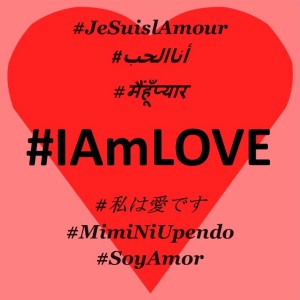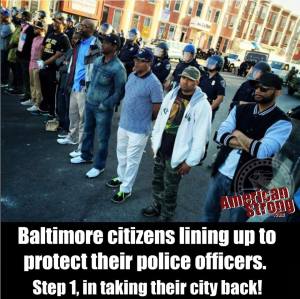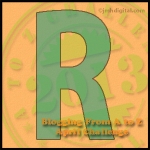I am not afraid.
I do not fear my brother or my neighbor or those who are different from me whether in my hometown or halfway around the world.
I’m told that I trust too much, too easily, too freely. I’m told I’m naïve because there are people in the world who will hurt me for no reason other than that I’m not them. But I’m not naïve. I know the world isn’t all sunshine and unicorns. I know that not everyone who populates it is Mother Teresa. I know the world can be harsh and the people in it cruel.
But I’m not afraid.
I’m not afraid because, when I was dying in the mangled remains of a wrecked car, a stranger stopped and held my hand until the ambulance and fire crew arrived to cut me free. I’m not afraid because random people I’ve never met in person reached out through the magic of social media to show me love, compassion, and support when my father died. I’m not afraid because a Muslim family who didn’t know me offered me comfort and support at a time in my life when I was hurting and needed it most.
On a larger scale, I’m not afraid because I see people rushing in instead of away in the face of tragedy. People helping instead of leaving others to suffer.
Every.
Single.
Time.
And I see people doing so despite danger to themselves and without regard for their own comfort. I see people helping each other and looking out for each other, even when there will be no reward or recognition.
I am so sad after hearing about what happened in Paris. It is horrible in a way that it would be impossible to convey with something as inadequate as words. It can only be felt, and I think we all feel it. I can’t speak for you, but I feel it when I think about the attacks on Friday and when I hear about shootings in Oregon or Kenya. I feel it as strongly when I hear reports about bombings of mosques as I do reports of church bombings. I feel it so strongly in so many other things that I hear every day that I have to limit my exposure to the news. I am blessedly sheltered from the experience of what the world can be, but the media is very sure that I know what the world is like.
But I am not afraid. Fear is not my default setting.
My default setting is love. It’s my nature, yes, but I also choose it, especially in the face of what looks like proof that I should choose otherwise.

On Facebook since Friday, I have seen a lot of people changing their profile pictures to display the blue, white, and red of the French flag. It is a beautiful way to show support for a grieving nation. But the problem is so much bigger than Paris alone.
I saw a poem, today, by Warsan Shire that brought me to tears. It said, “later that night, I held an atlas on my lap, ran my fingers across the whole world, and whispered, ‘where does it hurt?’ It answered, everywhere, everywhere, everywhere.”
All I can think when I read that is that we are doing this to ourselves.
I have said this before, but it bears repeating over and over and over again until we all understand it and know it all the way through our souls: There is no “us” or “them.” That is the road that has led us to where we are right now. That thinking has led us to closed minds and hate and acts intended to punish and terrify for no other purpose than to punish and terrify those who are not “us.”
So this time I’m shouting it and hoping I will be heard.
THERE IS NO US AND THEM! THERE IS ONLY US!
It’s just us. We are all connected and we are all related. So I’m proposing a new picture and some new hashtags:

#JeSuislAmour because I am Paris.
#AnaAlhubb (#أناالحب) because I am Beirut and Baghdad.
#MainHoonPyaar (#मैंहूँप्यार) because I am India.
#MimiNiUpendo because I am Kenya.
#WatashiWaAiDesu (#私は愛です) because I am Japan.
#SoyAmor because I am Mexico.
#IAmLOVE because I am everybody, and I am everywhere, whether they get mentioned in the news or not. I am Muslim and Jewish and Christian and Pagan. #IAmLOVE because love is the only thing that can can change fear and hate. #IAmLOVE because I choose it, and I am not afraid.
#NoUsNoThem
You are love, if you will choose to be.

Downloadable image proportioned for use as a Facebook profile photo. (On a computer, right click, and select “Save image as…” On a phone, touch and hold, then choose “Save Image”)





